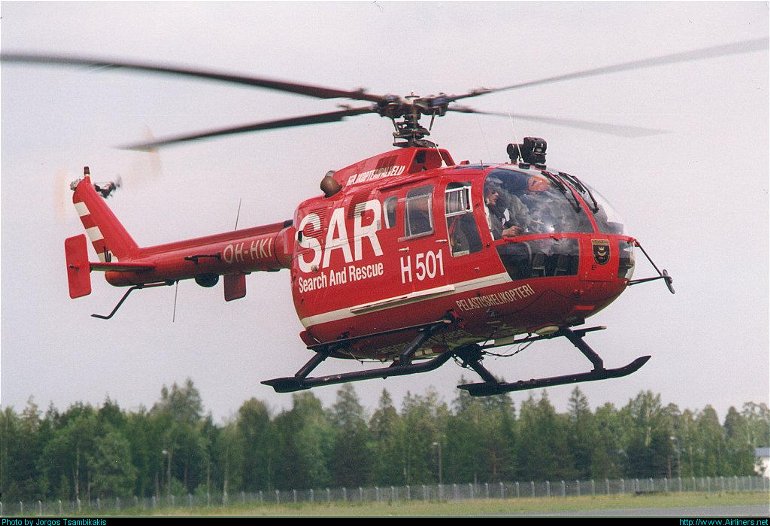Aircraft Technical Data
Eurocopter BO 105 & EC Super Five

| Details | |
| Country of Origin | Germany |
| Type | Five place multi purpose light utility helicopter |
| History | In widespread military and civilian service, the BO 105 is MBB's (now part of Eurocopter) most successful helicopter design. <p>Construction of the first of three prototypes began in 1964, the first of which made the type's first flight on February 16 1967. This aircraft was powered by 236kW (317shp) Allison 250C18 turboshafts and featured a conventional main rotor hub, but the subsequent prototypes incorporated a new rigid hub with feathering hinges, plus composite blades and MANTurbo 6022 engines. The BO 105 reverted back to Allison 250 power with the second of two preproduction aircraft, flying in this form in January 1971. Initial production was of the BO 105C which was available from 1970. The Allison 250C20 powerplant became standard from 1973. The BO 105 CB was introduced in 1975, and became the standard production model. It introduced uprated engines and a strengthened transmission. The BO 105 is now built in BO 105 CBS form with a slight 25cm (10in) fuselage stretch and extra window, allowing an extra passenger to be carried. <p>The BO 105 D has IFR instrumentation and was developed for the British offshore oil rig support market. The BO 105 L has more powerful engines and higher takeoff weight. The BO 105 LSA-3 is a hot and high version with Allison 250C28C engines and built exclusively in Canada by Eurocopter Canada. The BO 105 LSA-3 Super Lifter has been developed for aerial crane work and has a 2850kg (6283lb) max takeoff weight. <p>The EC Super Five is a high performance development of the BO 105 CBS with new main rotor blades. It was certificated in late 1993. |
| Powerplants | BO 105 CBS & Super Five - Two 313kW (420shp) Allison 250C20B turboshafts driving a four blade main rotor and two blade tail rotor. |
| Performance | BO 105 CBS-4 - Max cruising speed 240km/h (129kt), long range cruising speed 204km/h (110kt). Initial rate of climb 1457ft/min. Hovering ceiling out of ground effect 1500ft. Range with standard fuel and max payload 555km (300nm), ferry range with auxiliary fuel tanks 1020km (550nm). Super Five - Max cruising speed 245km/h (132kt). Initial rate of climb 1870ft/min. Hovering ceiling out of ground effect 7960ft. Range 575km (310nm). |
| Weights | BO 105 CBS-4 - Empty 1300kg (2868lb), max takeoff 2500kg (5511lb). |
| Dimensions | Main rotor diameter 9.84m (32ft 4in), length including rotors 11.86m (38ft 11in), fuselage length 8.81m (28ft 11in), height to top of main rotor mast 3.02m (9ft 11in). Main rotor disc area 76.1m2 (818.6sq ft) |
| Capacity | Total seating for five, including two pilots or one pilot and passenger in front bucket seats, and three passengers on rear bench seat. Behind rear seats and below the engine is a freight/baggage compartment, accessible by two clamshell doors in the rear of the fuselage. |
| Production | Approximately 1375 BO 105s of all models, including military versions, delivered thus far, including licence production in Canada, Indonesia, the Philippines and Spain. |
| Related Links | Eurocopter BO 105 & EC Super Five |
The backbone of this section is from the The International Directory of Civil Aircraft by Gerard Frawley and used with permission. To get your own copy of the book click here. |
|








